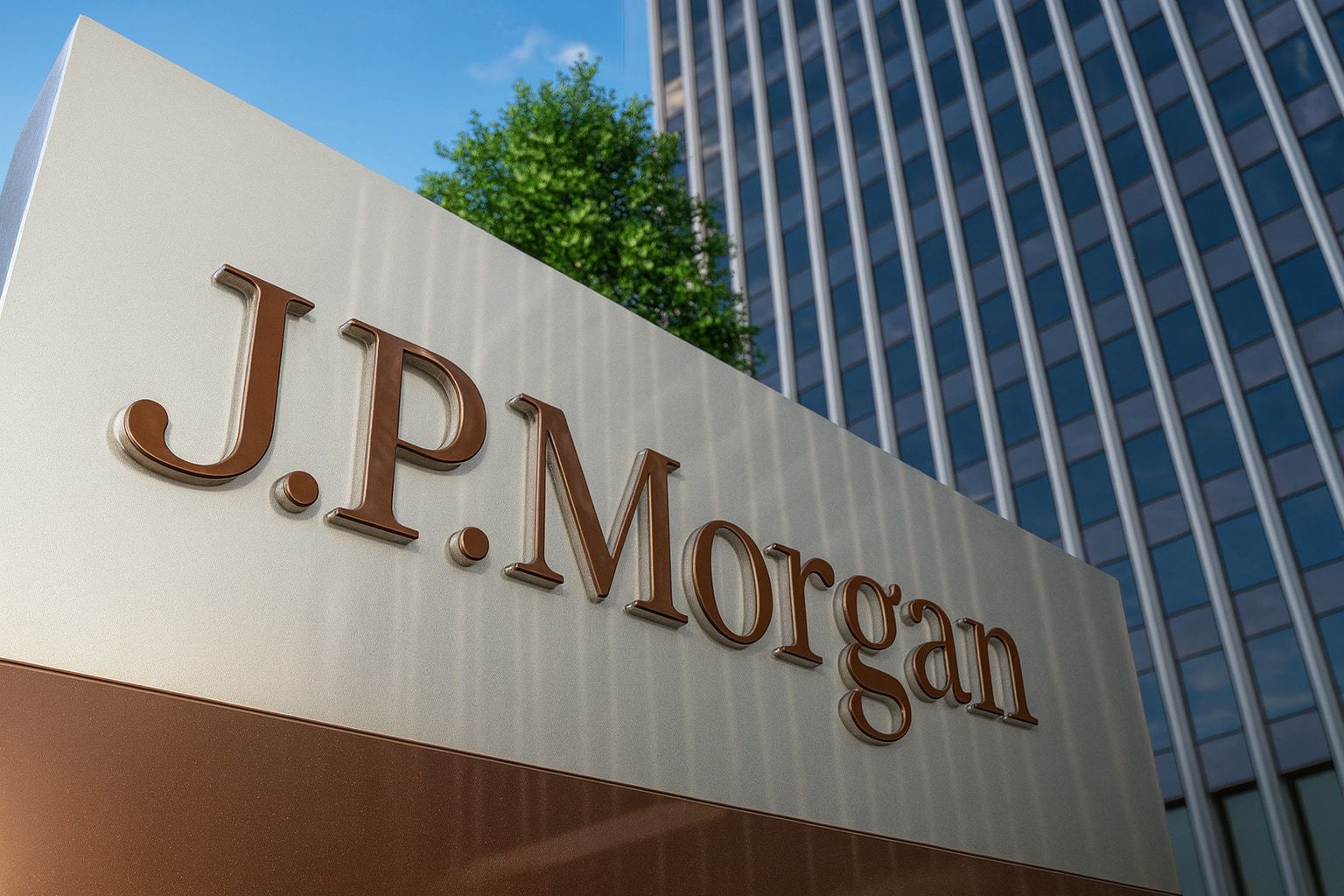- Huge Market: JPMorgan analysts say Stripe could tap a $350 billion market by 2030 through AI-driven commerce and digital payments [1].
- Scale & Profit: In 2024 Stripe processed ~$1.4 trillion in transactions (about 1.3% of global GDP) and became profitable, with net revenue of $5.1 billion (up 28% YoY) [2].
- Global Reach: ~1.35 million live websites use Stripe worldwide; its latest private valuation was about $91.5 billion (early 2025) [3].
- Crypto Expansion: Stripe has acquired crypto firms (Bridge – stablecoin infrastructure, Privy – crypto wallet) and launched Tempo, a payments-focused Layer-1 blockchain. Tempo recently raised $500 million at a $5 billion valuation [4] [5].
- AI Initiatives: Stripe is active in AI – e.g. it led a $50 million round for legal-AI startup Precedent AI [6] – and its Tempo blockchain is reported to involve partners like OpenAI, Visa, Anthropic and others [7] [8]. JPMorgan notes this early AI integration gives Stripe an edge (“agentic commerce” [9]).
- Industry Context: Blockchain stablecoins processed an estimated $46 trillion in 2025, now exceeding Visa’s transaction volume [10]. (Visa (NYSE: V) itself trades around $345 as of Oct. 2025, up ~10% YTD on crypto/AI initiatives [11].)
- Risks: JPMorgan warns regulatory headwinds (EU’s MiCA rules, uncertain US stablecoin oversight) and fintech competition/unbundling could pose challenges [12] [13].
JPMorgan Forecast: AI + Crypto = $350B Market
In late October 2025, JPMorgan research highlighted Stripe as a prime beneficiary of two “massive shifts in global finance” – namely the rise of AI-driven commerce and the evolution of digital money [14]. In a new report, JPMorgan analysts predict Stripe’s moves into AI commerce and crypto payments could let it “access a $350 billion market by 2030” [15]. The analysts even describe the opportunity as a “twin revolution in intelligence and money movement,” reflecting parallel growth in AI “agentic commerce” and programmable money [16] [17]. They note Stripe’s early partnerships with AI startups give it “a structural edge” and call Stripe “a beneficiary of borderless financial services” [18].
Stripe’s own size underpins the bull case. The company handled roughly $1.4 trillion in payments in 2024 and turned profitable, with net revenue of $5.1 billion (up 28%) [19]. This volume equaled about 1.3% of world GDP, underlining Stripe’s scale [20]. Stripe’s growth has translated into value: its latest tender offer in early 2025 implied a valuation near $91.5 billion [21]. Such scale and cash flow fuel JPMorgan’s confidence that Stripe can invest heavily in new tech while building on an enormous existing base.
Stripe’s Crypto and AI Push
Stripe is aggressively extending beyond traditional payments. In 2025 it bought Bridge, a stablecoin orchestration platform, and Privy, a crypto wallet provider [22]. These acquisitions build crypto rails and custody services into Stripe’s stack. Perhaps most ambitiously, Stripe incubated Tempo, a new Layer-1 blockchain optimized for payments. Tempo – developed with Paradigm – is “meant to serve as an Ethereum-compatible L1 optimized for high-throughput payments” [23]. The project has drawn major VC money: a recent Series A raised $500 million (at a $5 billion valuation) [24]. Stripe CEO Patrick Collison emphasizes Tempo’s practical focus – it’s “the payments-oriented L1, optimized for real-world financial-services applications” [25] – a far cry from speculative crypto projects. JPMorgan observes that technologies like Tempo could capitalize as stablecoins and programmable money become standard in cross-border trade [26] [27].
On the AI side, Stripe is also making bets. In mid-2025 Stripe led a $50 million funding round for Precedent AI, a startup using NLP to automate legal contract analysis for finance [28]. Stripe’s involvement in AI goes beyond investments: its platform already powers commerce for many AI startups. JPMorgan points out this gives Stripe a head start as AI-driven “agentic” systems begin making autonomous purchases and transactions. In short, Stripe’s integration of AI tools and crypto rails aims to make it the infrastructure hub for next-generation finance [29] [30].
Financial Markets and Peers
These developments come as investors watch the broader fintech landscape. Payment giants like Visa are similarly moving into crypto and AI. For example, Visa (V) is piloting stablecoin-based remittances and AI shopping bots, and its stock trades around $345 (as of Oct 2025) [31] [32] – roughly 10% above its start-of-year level. (By comparison, stablecoin transaction volumes have exploded – Andreessen Horowitz reports stablecoins did ~$46 trillion in 2025, eclipsing Visa’s network [33].) Analysts remain bullish on these trends: Visa has mid-$300s share targets, citing its “massive network and resilient spending” alongside new fintech rollouts [34] [35].
Stripe itself is still private, but market observers note it is on Wall Street’s radar. There have been reports that Stripe filed confidential IPO paperwork aiming for a 2025 listing [36] – a move that, if realized, could unlock further value for early backers and employees. Even without an IPO, Stripe’s momentum and backing allow it to act like a public fintech. Its strategic moves have echoes in public stock prices: as fintech disruption heats up, bank stocks (like JPMorgan) and payment networks often get a lift on growth and innovation beats. For now, however, Stripe’s progress is measured by private data and third-party analyses like JPMorgan’s.
Outlook and Expert Views
JPMorgan’s conclusion is cautiously optimistic. Its analysts highlight real challenges – from unclear U.S. stablecoin rules to Europe’s new MiCA regulations, plus risks of market fragmentation and fintech “unbundling” [37] [38]. But even accounting for these, they argue Stripe’s “unique blend of scale, innovation, and AI alignment could make it one of the defining companies in the next chapter of digital finance” [39]. In other words, if Stripe executes on these frontiers, it may well justify the sky-high expectations. As one industry commentator noted, the shift to programmable money and AI-based commerce is “no longer just a speculative playground” – companies like Stripe will determine how it unfolds [40] [41].
Sources: JPMorgan analyst report (via The Block/CoinCentral [42] [43]), Stripe financial statistics (SQ Magazine [44]), industry press (TechStock², CryptoDnes, CrowdfundInsider, etc.) [45] [46], market data. [47] [48]
References
1. coincentral.com, 2. coincentral.com, 3. sqmagazine.co.uk, 4. coincentral.com, 5. coincentral.com, 6. ts2.tech, 7. www.crowdfundinsider.com, 8. coincentral.com, 9. coincentral.com, 10. sqmagazine.co.uk, 11. ts2.tech, 12. coincentral.com, 13. cryptodnes.bg, 14. cryptodnes.bg, 15. coincentral.com, 16. coincentral.com, 17. coincentral.com, 18. coincentral.com, 19. coincentral.com, 20. sqmagazine.co.uk, 21. sqmagazine.co.uk, 22. coincentral.com, 23. www.crowdfundinsider.com, 24. coincentral.com, 25. coincentral.com, 26. cryptodnes.bg, 27. coincentral.com, 28. ts2.tech, 29. coincentral.com, 30. cryptodnes.bg, 31. ts2.tech, 32. ts2.tech, 33. sqmagazine.co.uk, 34. ts2.tech, 35. ts2.tech, 36. ts2.tech, 37. coincentral.com, 38. cryptodnes.bg, 39. cryptodnes.bg, 40. sqmagazine.co.uk, 41. cryptodnes.bg, 42. coincentral.com, 43. coincentral.com, 44. sqmagazine.co.uk, 45. cryptodnes.bg, 46. www.crowdfundinsider.com, 47. ts2.tech, 48. sqmagazine.co.uk










